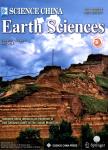Volcanism in the Solar System
作者机构:School of Earth SciencesChina University of GeosciencesWuhan 430074China School of Atmospheric SciencesSun Yat-sen UniversityZhuhai 519082China Key Laboratory of Earth and Planetary PhysicsInstitute of Geology and GeophysicsChinese Academy of SciencesBeijing 100029China College of Earth and Planetary SciencesUniversity of Chinese Academy of SciencesBeijing 100049China
出 版 物:《Science China Earth Sciences》 (中国科学(地球科学英文版))
年 卷 期:2023年第66卷第11期
页 面:2419-2440页
核心收录:
学科分类:07[理学] 070401[理学-天体物理] 0704[理学-天文学]
基 金:supported by the National Natural Science Foundation of China (Grant Nos. 42241111 41773061 41773063)
主 题:Volcanism Terrestrial planets Planetary evolution Solar System
摘 要:Volcanic activity is the main process for heat-material exchange and circulation for differentiated planets. All terrestrial planets in the Solar System, the Moon, the satellites of giant planets, and the dwarf planets once experienced or are currently experiencing volcanic activities. This paper summarized the volcanism(main volcanic features and their formation) on the Moon, Mars, Venus, and Mercury in the inner Solar System, volcanism and cryovolcanism on satellites(Io, Europa,Enceladus) of giant planets, as well as volcanism on dwarf planets including Cere in the main asteroid belt and Pluto in the Kuiper belt. This work shows volcanism in the Solar System is driven by various factors, forming abundant volcanic *** has significant meanings to compare volcanism happening on different planets using comparative planetology approaches for a better understanding of volcanism, the planetary habitability, and the information contained on the origin and evolution of planets in the Solar System.



